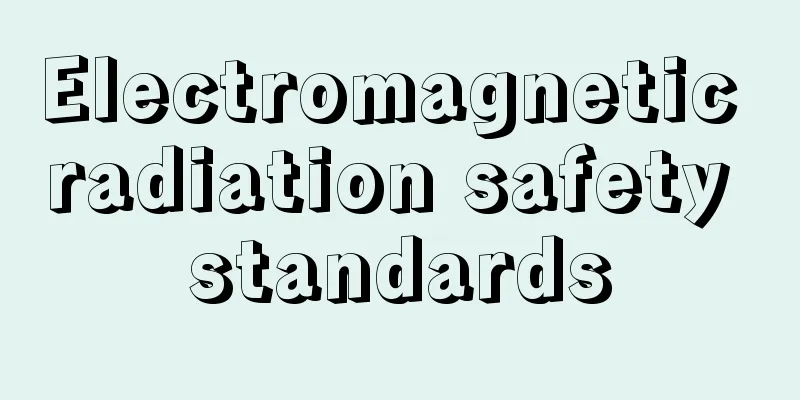Electromagnetic radiation safety standards

|
There is a kind of radiation in nature called electromagnetic radiation, which was later discovered by people and widely used in life. Induction cookers, ovens, microwave ovens, etc. are mainly based on the principle of electromagnetic radiation. However, normal people should know that excessive radiation will have a great impact on a person's health. Therefore, every country should have normal safety standards for electromagnetic radiation. So what are the safety standards for electromagnetic radiation in my country? 1. National standards for electromagnetic radiation The "Electromagnetic Radiation Protection Regulations" (GB8702-88) issued by my country's State Environmental Protection Administration has determined the national standard for electromagnetic radiation: within the frequency range of 30-3000MHz, the public is exposed to the environmental electromagnetic radiation field within 24 hours a day, and the average value of the field quantity parameters within any continuous 6 minutes does not exceed 0.4W/m2. Electromagnetic radiation, also known as electronic smog, is composed of electrical energy and magnetic energy transferred together in space, and this energy is generated by the movement of electric charges. For example, electromagnetic energy is generated by moving charges from a transmitting radio frequency antenna. The electromagnetic "spectrum" includes all forms of electromagnetic radiation, from extremely low frequency electromagnetic radiation to extremely high frequency electromagnetic radiation. In between there are radio waves, microwaves, infrared rays, visible light and ultraviolet light. The radio frequency portion of the electromagnetic spectrum is generally defined as radiation with frequencies from about 3 kHz to 300 GHz. Some electromagnetic radiation has certain effects on the human body. 2. What are the electromagnetic radiation safety standards? The maximum permissible limit of electromagnetic field intensity in different locations is established to effectively protect the health of workers, prevent ignition and explosion, interference with electronic equipment, and prevent environmental pollution. Including electromagnetic radiation operation safety standards, electromagnetic radiation environmental safety standards, electromagnetic leakage control standards and electromagnetic radiation interference standards. 3. National regulations on electromagnetic radiation safety values Electromagnetic radiation is divided into two levels: the unit of the industrial frequency band is μT, which tests industrial frequency electromagnetic waves below 50 Hz. (For example, household appliances and high-voltage lines) If the radiation is above 0.4μT, it is considered strong radiation. The radiation is between 0.3 and 0.4μT, which is a warning value. As for 0.3μT, especially below 0.1μT, it can be considered safe. The unit of radio frequency electromagnetic wave is μW/㎝2 (for example, microwave ovens, mobile phones, and radio and television base stations generally measure frequencies from several hundred to thousands of hertz). Above 10μW/㎝2 will cause harm to the human body. |
<<: What shoes look good on a short person
>>: Is fasting blood sugar 59 normal?
Recommend
Pain in the left tonsil
Pain in the left tonsil is painful and affects pe...
Genetic characteristics of bladder cancer
Bladder cancer has no family history, which means...
What are the effects of warm qi and blood oral liquid
Warming Qi and Blood Oral Liquid is an oral liqui...
How long does it take to check for skin cancer
What are the diagnostic methods for skin cancer? ...
Atrophic gastritis feels gastric alkaline
There are many types of stomach diseases, and atr...
How big is a 67-day-old fetus?
When you are 67 days pregnant, you are in the ear...
The principle of treating toothache with white wine and salt
Toothache is not scary, but it is really painful ...
What should I do if someone snores and I can’t sleep?
There are several groups of people who are partic...
What causes unilateral lower back pain?
The health of the waist is very important, becaus...
How to make your own cervical pillow
In daily life, more and more people are suffering...
Is endometrial cancer hereditary?
The emergence of cancer is still a mystery that h...
Will uterine cancer recur after radiotherapy?
Cervical cancer recurrence refers to the disappea...
How to self-treat lumbar disc herniation
Lumbar disc herniation is a disease that is neith...
What aspects does anti-infection treatment for lung cancer include? What are the common treatments for lung cancer?
What does anti-infection treatment for lung cance...
Can ginger really cure body odor?
Ginger is grown in many areas and has become a co...









